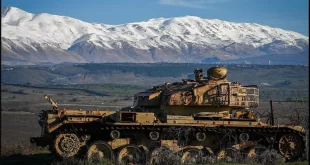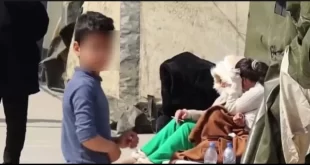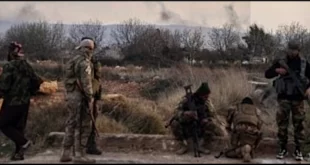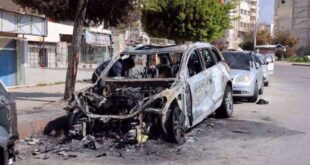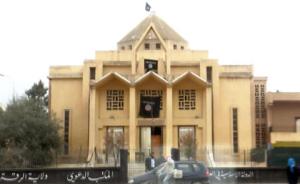
Jan 19, 2014, Levant Report
Only a couple of major newspapers in the world have bothered to regularly cover the plight of Syria’s diverse religious and ethnic minorities living in rebel held areas. Lebanon’s The Daily Star and Al-Akhbar newspapers have featured consistent coverage of Syria’s Armenians, Kurds, Iraqis, Druze, Christians, and Ismailis – and the threats these communities face in opposition held parts of Syria. Read the latest Al-Akhbar coverage of two Armenian Christian business owners who dared to stay in Northern Syria, attempting to hold on to their family livelihood in a rebel controlled area. They were arrested, forced to convert, executed with bullets to the head, and denied burial.
The Syrian opposition was sold to the world by mainstream Western press from day one of the Syria conflict as representing democracy, freedom, and a pluralist future for a new Syria. But the last couple of years testify the complete opposite. Anyone who actually spent time in Syria prior to the conflict knows that Ba’athist Syria has always been unique in the region for the high degree of freedom that minorities exercise.
I’ve personally seen the very public way that Syria’s religious and ethnic minorities comfortably fit in to Syrian society. One can see crosses everywhere in nearly every Syrian urban center, or hear church services transmitted over loudspeakers in competition with the Muslim call to prayer echoed from nearby mosques. The multi-colored Druze star is visible in suburbs of Damascus and all over villages in the south of the country. Any visitor to Aleppo immediately notices the very public Armenian presence with Armenian script proudly displayed in market places.
In the Hauran region, one can visit a recently erected huge government sponsored memorial to the Druze patriarch Sultan al-Atrash, who famously said, “Religion is for God, the fatherland is for all.” In the dozens of hotels around the Damascus city center, one encounters Kurdish bellhops who are proud to tell visitors of their Kurdish identity. One of the largest Christ statues in the world was recently erected over the ancient village of Saidnaya. The Orthodox monastery that sits at its base was, in the last months, the recipient of rocket attack by rebel insurgents hoping to gain control of the mountain that dominates the surrounding villages.
Speaking of Saidnaya, on one of my visits in the mid-2000′s I was shocked to see special media coverage on SANA – Syria’s national TV news station, of a reported miracle connected to the village’s 6th century Our Lady of Saidnaya Monastery. A wealthy Saudi Muslim man was attacked and robbed while driving to visit the Christian monastery (revered even among area Muslims as a place of spiritual healing). The man’s throat was slit and he was stuffed into the back of his car and left to die. When the police found him, the man swore that the Virgin Mary came to him, healed his slit throat, and restored him to health there on the spot. The story made national prime time news. Perhaps the most miraculous aspect to the episode for me was the fact that the story of a miracle connected to a Christian village aired on national news in a country that was 70-75% Sunni Muslim.
This is a side of Syria only known to those who have spent a significant amount of time there. Sadly, the standard narrative of the Syria conflict has been constructed by reporters, pundits, and politicians who have hardly stepped foot inside Syria, if at all. This is why, even aside from the silly singular reliance on rebel sources for information, subtle but hugely significant mistakes are made with even the basic facts of Syrian society and history. Hugely influential outlets such as the New York Times, Washington Post, or CNN routinely identify the regime as ”Shia-dominated” – or alternately, Assad as “pro-Shia”. From this, they construct and over-emphasize their narrative of “Shia vs. Sunni” sectarian civil war.
Anyone who knows anything about the esoteric Alawite identity and faith knows it is nothing close to Shi’ism, whatever the historical roots might be. Syria’s close relationship with Iran is, and has always been, a matter of convenience as part of a self-imagined “axis of resistance”. This has little to do with Shia religious ties and identity.
During the 2006 Israeli invasion of southern Lebanon, I was walking through the Christian section of Old City Damascus. I walked past the window of a prominent Christian bakery and saw large Hezbollah cakes. The cakes featured Hezbollah’s green and yellow AK-47 and clenched fist emblem glazed in icing, as well as small images of a burning Israeli battleship. The cakes were commemorating Hezbollah’s recent successful drone attack of an Israeli warship stationed off the Lebanese coast. That a Christian baker would make and promote such a cake had nothing to do with being “pro-Shia” – but was about a shared feeling and identity of “resistance”. The idea that Assad (or his regime) is Shi’ite with a supposed pro-Shia mission is based in ignorance and disinformation.
Based on my experience living in Syria, my many contacts with Syrians inside the country and abroad, and my personal grappling with the tragedy that has befallen a beautiful country, I’ve come to one certain conclusion:
The fight in Syria is between those that want to continue Syria’s pluralistic and secular identity – those that want to ensure a high degree of personal social and religious freedoms, and those that want to erect fanatic Sunni rule along the lines of a Taliban or Saudi religious police state model. The latter, among actual Syrian nationals (as opposed to the mass flux of foreign fighters), are in the minority; and this means that the current “rebel opposition” is in reality an aggressive terrorist insurgency (and this was so much earlier than the major media pundits will ever recognize). Sadly, this insurgency is only made strong through its significant Saudi, Qatari, and NATO support and funding. I say all of this while fully acknowledging that there have been real crimes and shortcomings of the regime.
The Western pundits don’t know what to make of Assad’s continuing to stay in power – a reality contrary to their every prediction of his immediate demise sounded every few months over the past two years. Since it is they who’ve attempted to frame the narrative in purely sectarian terms, they ought to be asked: why hasn’t Damascus, with its clear majority Sunni population, thrown off the “hated” dictator?
The answer is simple. The majority of Syrians, whether Sunni, Shia, Alawi, Christian, Kurd, Ismaili, are sane individuals – they’ve seen what life is like under the “alternative”. They recognize that there is a real Syrian national identity, and it goes beyond mere loyalty to the current ruling clique that happens to be in power, but in Syria as a pluralistic Levantine society that doesn’t want to model itself on Saudi Arabia.
 Syria Support Movement solidarity with the Syrian people
Syria Support Movement solidarity with the Syrian people

